Federal Legislation – The Structure of a Bill
A bill consists of the following elements:
- Number
- Title
- Preamble
- Enacting clause
- Clause
- Interpretation provisions
- Coming-into-force provisions
- Schedule
- Explanatory notes
- Summary
- Marginal notes
- Underlining and vertical lines
- Headings
- Table of contents
- Royal recommendation
Number
- When a bill is introduced in the House, it is assigned a number:
- Government bills (2 to 200).
- Private Members' bills (201 to 1000).
- Private bills (1000 and up).
- A bill introduced in the House of Commons begins with "C”.
- A bill introduced in the Senate begins with "S”.
EXAMPLE: Bill C-47 originated in the House of Commons.
Title
- Always use the official or long title of a bill, as the short title has not yet been approved.
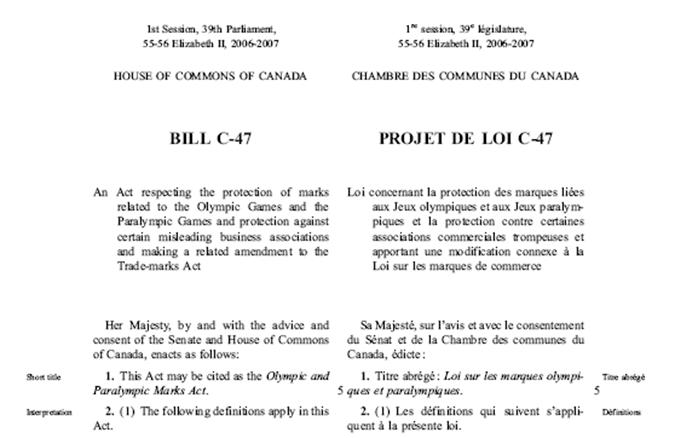
Preamble
- Not included in every bill (sets out Parliament's reasoning).
EXAMPLE: Preamble to Bill C-6 (An Act respecting the safety of consumer products) starts with the following:
Whereas the Parliament of Canada recognizes the objective of protecting the public by addressing dangers to human health or safety that are posed by consumer products;
Whereas the Parliament of Canada recognizes that the growing number of consumer products that flow across the borders of an increasingly global marketplace make the realization of that object a challenge; . . . .
Enacting Clause
- Always the same (will change only if a King succeeds Queen Elizabeth II).
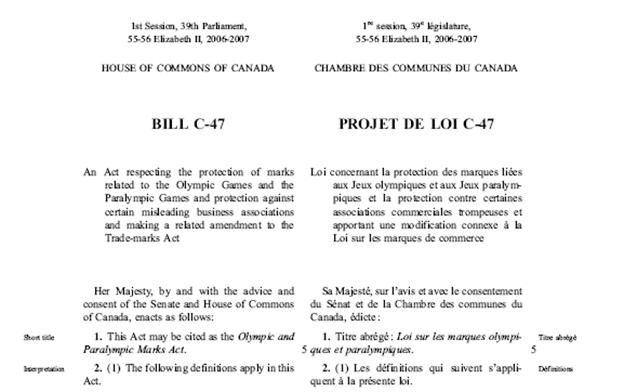
Clause
- A clause is a section of a bill.
- Every statute has at least one clause and may have thousands.
Interpretation Provisions
- Contain statutory definition, etc.
- Are usually found in s. 2 of the bill but may also be found throughout various sections of a bill (e.g., Criminal Code).
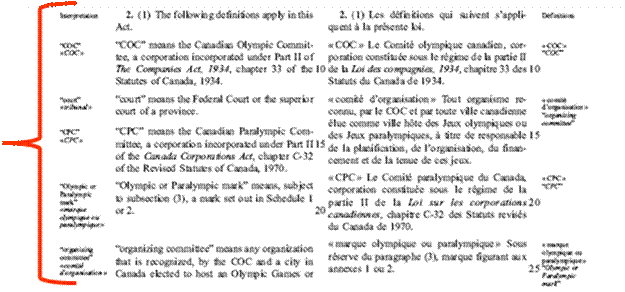
Coming-into-force provisions
- Tell you when the bill, if passed, will come into force.
- Usually found near the end of the bill. Can specify that the Act:
- comes into force on the day it receives royal assent;
- will come into force on a specific date;
- comes into force on a date "to be proclaimed”; or,
- will come into force when certain conditions are met (e.g., following the coming into force of another Act or the signing of a treaty).
- Many, but not all, bills contain these provisions.
- Usually, if there is no specific proclamation date, the Act comes into force on the Royal Assent date. You can also check the Interpretation Act to find out when the statute would normally come into force. Parliament also has the power to make an Act apply retrospectively (i.e., from a date earlier than the date on which it was actually passed).
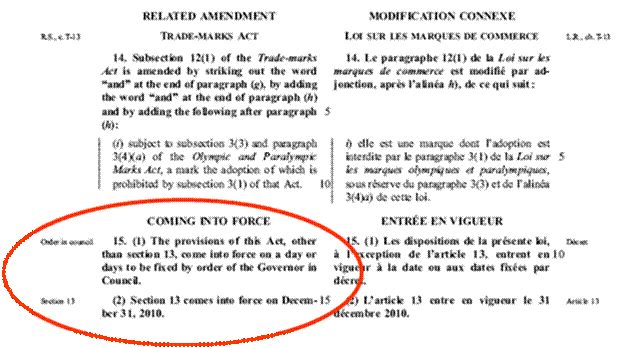
Schedules
- Located at the end of the bill.
- Do not appear in every bill.
- Detail further information (e.g., list of marks protected by Bill C-47, The Olympic and Paralympic Marks Act, if adopted).
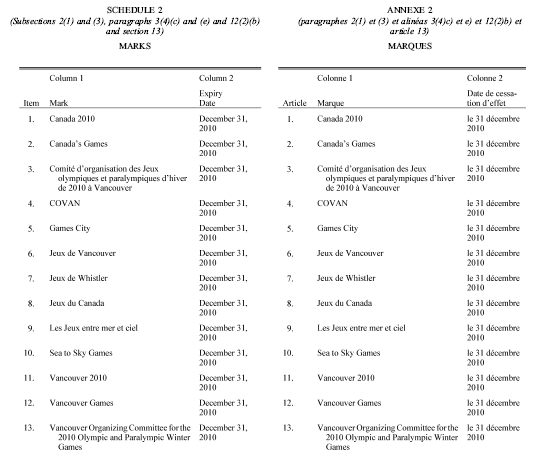
Explanatory note
- Not included in every bill.
- Unofficial part of a bill that explains a section or sections in more detail.
EXAMPLE: Bill C-47, The Olympic and Paralympic Marks Act, contains this explanatory note:

which explains s. 14 in further detail:

Summary
- Appears at the beginning of most bills.
- Provides a short, unofficial summary of the bill.

Marginal notes
- Helps you navigate your way through the text of the bill.
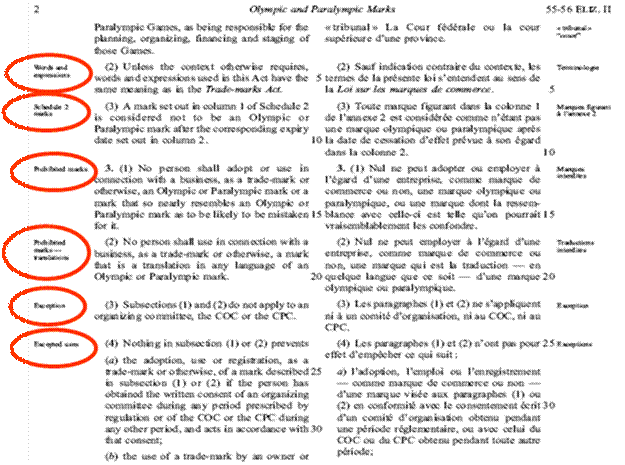
Underlining and vertical lines
- Where a bill modifies an existing statute, these are sometimes used to emphasize the suggested modifications.

Headings
- Like marginal notes, help you navigate your way through the text of the bill.
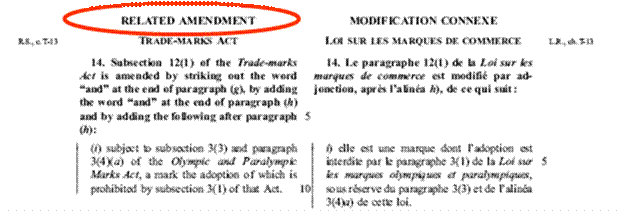
Table of contents
- Complex bills tend to include a table of contents or table of provisions.
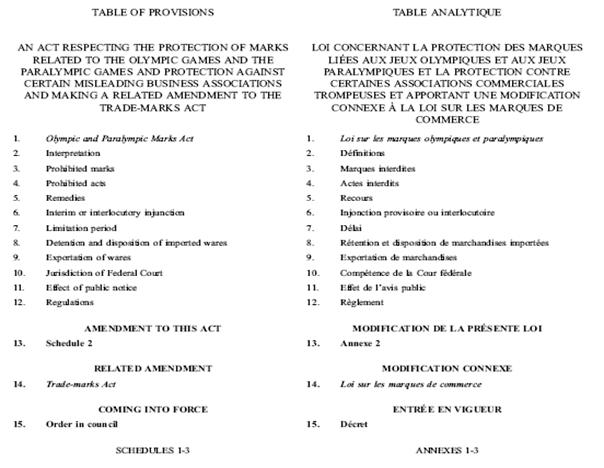
Royal recommendation
- Provides the Governor-General's "permission” to the Government to spend money.
- Normally not a part of a bill introduced by a Private Member (such bills cannot force the Government to spend money).
EXAMPLE: Bill C-6 contains the following "Recommendation” preceding the Summary:
Her Excellency the Governor General recommends to the House of Commons the appropriation of public revenue under the circumstances, in the manner and for the purposes set out in a measure entitled "An Act respecting the safety of consumer products”.
